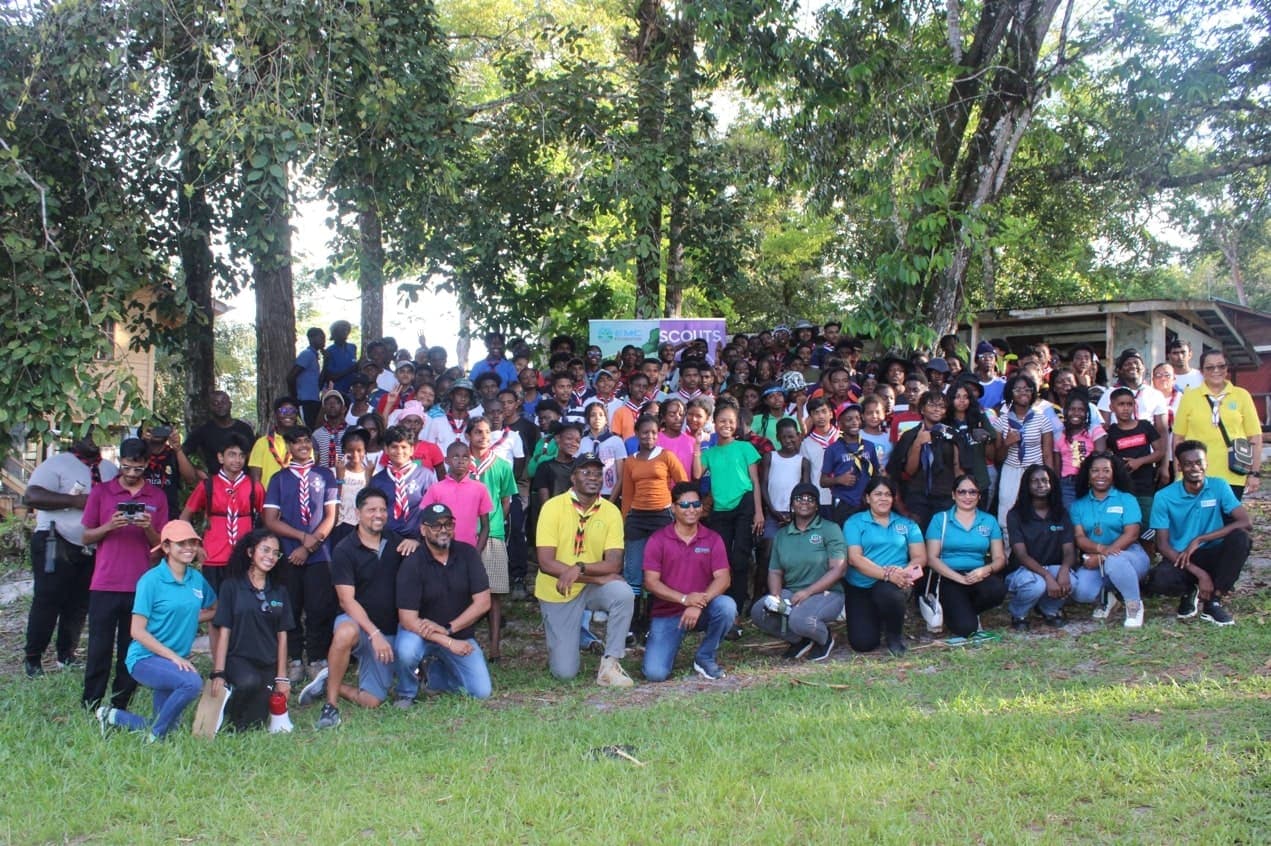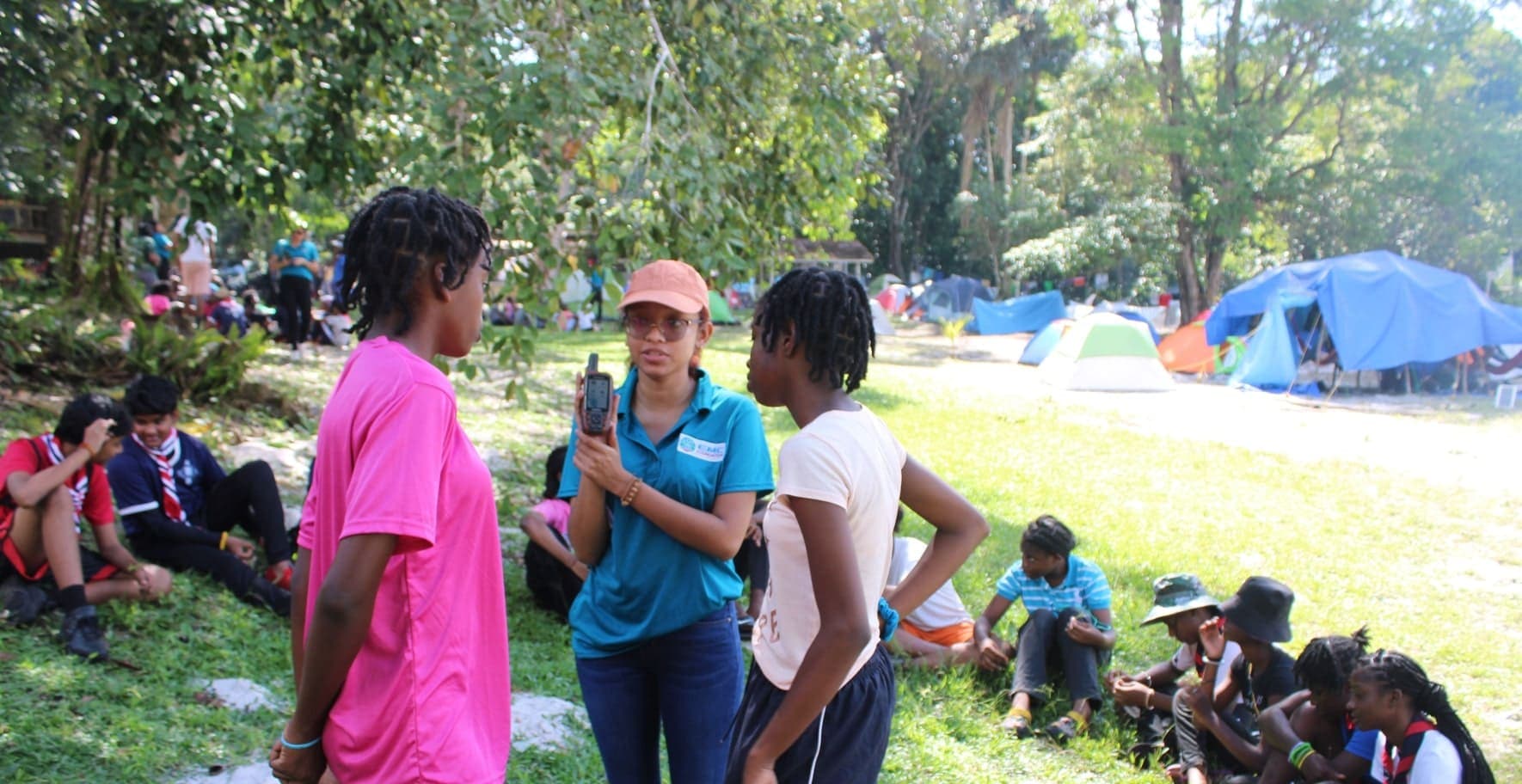EMC SAG partnership 2024

EMC SAG partnership 2024
Our recent scouting expedition took an unexpected and exciting turn when the EMC Foundation joined us, bringing along a range of cutting-edge learning experiences. What started as a routine outdoor adventure quickly evolved into a journey of discovery, where we explored new skills and technologies that left us not only inspired but also more connected with the world around us.
Our day began with a nature walk, guided by a representative from the Guyana Forestry Commission. As scouts, we're no strangers to the outdoors, but this walk was different. With his expertise, we were introduced to the subtle wonders of the environment that often go unnoticed. He pointed out various plant and animal species, teaching us to identify them by their unique characteristics. From the vibrant colors of a bird's plumage to the intricate patterns on leaves, we learned to observe the natural world with a keener eye. It wasn’t just about identifying flora and fauna; it was about understanding the delicate balance of ecosystems and the importance of conservation. The walk instilled in us a deeper appreciation for the environment, reminding us of our role as stewards of the earth.
One of the most memorable experiences was the Camera Trap workshop. Before this, most of us had only seen camera traps on nature documentaries, capturing footage of elusive wildlife. However, the workshop gave us a hands-on opportunity to understand how these devices work. A camera trap is essentially a remote, motion-activated device equipped with a camera and an infrared sensor. It’s designed to be placed in various environments to automatically capture images or videos when movement is detected. The appeal of camera traps for scouts like us lies in their ability to observe wildlife without human interference, gather valuable data, and support conservation efforts. We learned how to strategically place these traps in the environment to maximize the chances of capturing meaningful data. The workshop also touched on the broader implications of camera trap usage, such as their role in research and how they contribute to a better understanding of animal behaviors in their natural habitats. This session left us with a sense of empowerment, knowing that with the right tools, we could contribute to wildlife conservation efforts.
Following the camera trap workshop, we were introduced to drone technology, which was easily the most exciting part of the day for many of us. The EMC team gave us an in-depth demonstration of how drones, or UAVs (unmanned aerial vehicles), operate. They explained the various components of the drone, from the propellers to the onboard cameras, and discussed the science behind flight dynamics. What really captured our attention was the real-time demonstration of the drone in action. We watched in awe as the drone soared into the sky, and the operator explained the different readings on the controller, such as altitude, speed, and battery life. We also learned about the practical applications of drones, particularly in conservation and data collection. The pilot demonstrated how drones could be used in tandem with camera traps, collecting and transferring data from remote locations that are difficult to access by foot. The thought of using drones to observe wildlife from above, without disturbing the animals or their habitats, was fascinating. This introduction to drone technology opened our minds to the endless possibilities that such tools offer, not just for scouts but for various fields like conservation, research, and even disaster management.
Our exploration of technology continued with a segment on GPS (Global Positioning System) technology. One of the volunteers guided us through the basics of using a handheld GPS device. While most of us were familiar with GPS from using navigation apps on our phones, this session delved deeper into its functionality. We learned how to mark waypoints, create trails, and navigate unfamiliar terrain using just the GPS device. The volunteer also explained the importance of understanding coordinates and how to read them accurately. This knowledge is crucial for outdoor activities, especially when navigating in remote areas where traditional maps might not be detailed enough. The hands-on practice of plotting new points and creating our trails was not only educational but also fun, as it challenged us to think critically about navigation and spatial awareness.
The visit from the EMC Foundation was far more than just a series of technology demonstrations. It was an opportunity for us scouts to engage with new ways of learning and problem-solving. Each activity provided us with hands-on experience that will undoubtedly enrich our future endeavors, whether in scouting, academics, or our personal lives. The skills we learned are not just applicable to our current projects; they have broader implications for our roles as future leaders and innovators. The day left us with a renewed sense of curiosity and a desire to continue exploring the world around us through the lenses of technology and nature. We are incredibly grateful to the EMC Foundation for their time, expertise, and for opening our eyes to the fascinating intersections between technology and the natural world.
Image Description
A representative of the EMC showing Scouts how to use a handheld GPS.


